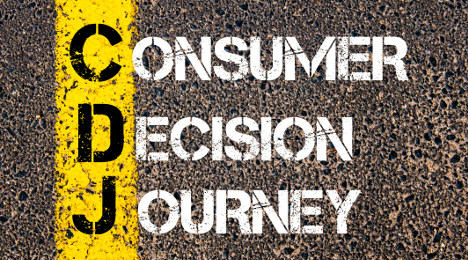The word “process” may remind football fans of the likes of Nick Saban.
As has been documented many times in the press, it’s laser-like focus on the minutiae, the exact task at hand. A piecemeal approach, if you will.
Five national championships for the Alabama coach are proof that strategy can work.
For Garth Blumenthal and the team at Fletcher Jones Motorcars, following a fine-tuned, highly specified process — one that focuses on ensuring the vehicle and the experience of the customer is of the utmost quality — has helped the store become the top-selling Mercedes-Benz certified pre-owned dealer.
And the Newport Beach, Calif., dealership is Auto Remarketing’s 2016 CPO Dealer of the Year, sponsored by NCM Associates.
The dealership will be presented the award on Nov. 14 at the CPO Forum presented by Autotrader, part of the Used Car Week conferences being held Nov. 14-18 at the Red Rock Casino, Resort and Spa in Las Vegas. Blumenthal will also be participating on the “Dealer Panel: Top 10 Best CPO Ideas” discussion the following morning at the CPO Forum.
‘Tightly defined process’
Fletcher Jones led all Mercedes-Benz dealers with 1,885 CPO sales in 2015. When asked what has allowed them to achieve such success, Blumenthal said the overall process regarding new and CPO — which certainly are intertwined — plays a big role.
It goes all the way back to figuring out if the store will keep a car when it comes into the dealership, making sure they’re acquiring the right cars via lease returns or trade-ins, said Blumenthal, who is the general manager.
The reconditioning process is very “closely controlled” at Fletcher Jones, which has a team dedicated specifically to certified pre-owned, including a CPO recon manager specifically assigned that task.
“When they have a focus on one thing, they tend to get better at it, rather than trying to fit it in with a lot of other cars that are going through the shop for other reasons, whether it’s customers’ cars or whether it’s new cars’ PDIs, etc., ” Blumenthal said. “I think that gives us an edge right there, having not only the best people, but also a very tightly defined process.”
He said certified sales this year are trending similarly to 2015 and he anticipates their numbers will be closer to 2,000 units.
Market challenges
Availability, Blumenthal said, is a market-wide challenge, but new-car sales volume and lease returns have helped Fletcher Jones. Those developments have allowed them to have more of a selection than other dealers, he said.
“It’s a ready-made supply stream, if you will,” Blumenthal said, “which not everybody is seeing. And I’m hearing from some of our other brother or sister stores that they’re having great difficulty finding quality pre-owned Mercedes.”
Given those challenges, Fletcher Jones will work with other Mercedes-Benz stores. For example, if cars come in that are duplicates of vehicles already in their inventory, the store will offer them to other dealerships.
“But even having said that, there is still in many cases a general shortfall (in supply) in certain models that dealers need to meet the demand levels out there,” he said.
Shopper experience
When asked what consumers are looking for when they stop into Fletcher Jones, Blumenthal pointed to transparency and vehicle quality. Regarding the latter, he said: “Our policy is we don’t want to ever have to make an excuse for a car, so we don’t really spare any expense in going through the reconditioning process, and that includes cosmetic items.”
Take, for instance, store’s Platinum Certified program, which goes beyond what automaker requires in its CPO guidelines. The dealership will put the car through additional checkpoints when inspecting the frame and body work, but it also involves certain aesthetical perks like brand new floor mats in each car.
“And that gives that certified pre-owned car the feeling of a new car,” Blumenthal said. “It’s an inexpensive way to make the car feel much fresher, if you will — much more attractive to the consumer.”
Fletcher Jones aims to treat used cars “just as if they were new” when it comes to expectations for the vehicle and on the salesperson.
It’s about providing an oil change, even if it’s not required, or giving the car a full tank of gas. In other words, “giving it the attention and respect that car — and, of course, the customer — warrants or deserves,” he said.
After all, these pre-owned buyers aren’t just current customers, he said; they’re potentially future customers.
There’s also the Fletcher Jones Preferred Owner program. When a shopper buys a CPO, he or she gets same benefits as a new-car buyer. The buyer will get free hand car-washes Monday through Saturday, for example. Plus, free airport parking at a separate facility and a shuttle to John Wayne Airport in Orange County. The vehicle is stored and washed while the customer is out of town.
“They’re buying a certified pre-owned but they’re getting the same benefits as the new-car buyer. And I think that has a lot to do with the recognition of what we do, in terms of the guest experience,” Blumenthal said. “The guest experience is absolutely everything for us, and ultimately is a strong future predictor of business as we try to build that relationship going forward.”
Dealership-wide buy-in
CPO has allowed the store to pull in aspirational buyers, as well.
“There’s no question. And that’s certainly the goal, to try and get people into the Fletcher Jones family and have them become part of our ongoing cycle of discussion,” he said, “and also into our buying cycle processes, in terms of how we reach out to them and how often we reach out to them and what that contact strategy is going to be all about.”
Fletcher Jones certainly has CPO buyers who are new to the Mercedes brand, but they also have many long-time pre-owned buyers who prefer used to new because of the value proposition of buying a car where someone else has taken the brunt of depreciation.
Blumenthal calls these folks “CPO loyalists.”
But you might even call Fletcher Jones Motorcars a “CPO loyalist,” too.
The dealership is nearing its 25th anniversary and pre-owned has been a focal point since Day 1, Blumenthal said.
“Pre-owned has always been important. There aren’t difficulties to get buy-in because it’s just a way of life. It’s part of the culture; it’s part of what we do … if you look at it as an entity, the number of pre-owned (vehicles) we sell would put us into a fairly high ranking when compared to new car Mercedes-Benz dealerships even,” he said. “You just look at the volume: close to 2,000 cars. And you look at how many dealerships sell that many in a year, new-car wise, you’ll see it’s basically an entity of its own.”
And that’s with just one sales force that sells both new and pre-owned. That approach works, he said, because the salesperson will focus on what is best for the customer instead of the specific department in which he or she works.
It may be that a customer initially comes in as a new-car shopper, but it turns out that a pre-owned car ends up working best. Or vice versa, he said.
The point is to pay attention to the guest’s needs rather than the needs of a department
That’s just part of the process.
Cox Automotive chief economist Tom Webb fully expects this year’s certified pre-owned vehicle sales total to surpass what the industry generated in 2015, which was 2.55 million units.
During his quarterly conference call with the media and other industry observers this week, Webb projected that this year’s CPO sales figure might land near 2.7 million, perhaps even 2.8 million units, which means the industry is likely to produce a robust or perhaps even record-breaking quarter to close 2016.
According to Autodata Corp., CPO sales came in just above the 2-million mark through Sept. 30, a figure 3.7 percent higher than the amount registered at the same point last year. The industry is coming off consecutive quarterly performances that established a new record (the Q2 figure of 678,169 units) as well as the second-best figure (the 675,725 units turned in Q3).
During the fourth quarter of last year, the industry moved 624,624 CPO units for a 4.8-percent hike. Webb indicated “the year-to-date increase we’ve had through September might end up being a little bit less by the time we get to the end of this year simply because there were some high sales last year.”
And with off-lease volume projected to hit 3.6 million next year and likely to approach 4 million lease returns in 2018, the raw material is there for plenty of CPO sales, according to Webb.
“Certainly the off-lease units create the inventory for those programs,” Webb said. “They also put some pressure in terms of the lessors supporting the programs in order to protect residual values for end-of-term units.
“To a certain extent, it relies on the efficiency of your dealership network because there are certain franchises, primarily on the luxury side, where in terms of the dealer’s lots, it’s basically all CPO units or a very high majority are CPO units of that brand,” he continued. “Do they have the potential for greater throughput there? Once it’s outside the franchise network, it’s no longer going to be certified.
“The decision to CPO a unit or not CPO a unit is the dealer’s, so that it’s a profit opportunity to do or not to do that,” Webb went on to say.
Beyond the raw sales figures, Webb said it’s that opportunity to generate margin that’s driving dealerships to move CPO metal.
Dealerships’ certified divisions, in part, have turned the tide of diminishing margins. Webb pointed to performances of the publicly traded dealer groups as evidence of the trend.
“There has been some players out there in terms of the publicly traded who are doing a good job and have actually tried to protect gross margins on the used-vehicle side,” he said. “It was getting a little dicey there as they kept driving margins lower. I think there is a little bit of protection of that gross margin and to a certain extent you sacrifice volume because of that.
“We just got to a point where the margins got as low as they can get. A lot of the easy efficiency gains in order to allow that margin reduction had already been achieved. I think we sort of level off from here,” Webb added.
And to keep margins steady, it’s the certified pre-owned model that’s literally the vehicle to get dealers there, especially within franchised operations.
“Typically the bulk of their sales are units under 5 years old unless they’re setting up a separate lot to handle those older units,” Webb added.
When the calendar rolled past the close of the third quarter this past Friday, certified pre-owned sales reached the second-highest quarterly figure ever.
Autodata Corp. reported on Tuesday that Q3 CPO sales came in at 675,725 units, representing a 3.4-percent lift year-over-year.
Looking at the quarterly data from a sequential viewpoint, Q3 marked just a 0.4 percent softening from the second-quarter amount that just happened to be the best quarterly figure ever.
The industry compiled the third-quarter figure by turning 208,070 CPO units in September. That amount marked a 1.4-percent softening versus September of last year. Though there weren’t any all-records reported during September, Cadillac reported its strongest certified sales in nearly seven-and-a-half years, Autodata said.
Perhaps the CPO market might have set a new quarterly record for the second stanza in a row had September sales not lost some steam to close Q3. Autodata pointed out last month’s figure marked a 10.8-percent drop-off versus August.
Autodata also mentioned there were 25 selling days in September of this year as compared to 26 in August. A year ago, there also were 25 selling days.
The September 2016 daily selling rate was down 1.4 percent from a year ago and down 7.2 percent from a month earlier.
The Nissan brand has boosted its certified pre-owned sales this year by nearly 9 percent, according to Autodata Corp., moving 122,651 CPO units through eight months.
And the past two (July and August) each broke all-time records.
The luxury arm, Infiniti, has seen certified sales climb almost 17 percent, with year-to-date sales reaching 20,491 through August.
And dealers are buying in.
Dealer engagement with the Nissan certified brand is at a record high, said Marty Gleason, who heads up Nissan CPO.
“Strongest it’s ever been,” Gleason said, “but there’s still room to grow.”
In addition to the cyclical nature of the business (especially with off-lease volume) and the fact that CPO can protect residual values well, strong engagement in CPO from dealers plus strong support from the brand and captive are driving these records from Nissan, Gleason said.
During an interview with Auto Remarketing at Nissan North America’s headquarters, he estimated that about 15 percent of the Nissan dealers aren’t engaged with CPO, with some of those being smaller dealers and/or those that have their own certification programs/warranty companies.
“But to me, the most sophisticated organizations are deep into it,” he said, citing Berkshire Hathaway Automotive and Penske Automotive Group as examples. “These are guys that completely understand the CPO business.”
And even with Berkshire owning a warranty/service contract company, one of its dealerships — Trophy Nissan — is the brand’s top CPO dealer, Gleason said. Penske, meanwhile, targets a CPO-to-new ratio of 35 percent, he added.
“Our publics are big, big contributors,” Gleason said.
What drives that engagement from the public groups, Gleason said, is the loyalty and retention that CPO can generate.
New-car loyalty for Nissan is over 50 percent, Gleason said, and CPO is within 5 percent of that. Public retailers also see “how vested the captives are” in CPO, he added.
The credit approval process on the new-car side at Nissan Motor Acceptance Corp. is easier if the shopper is already a CPO customer, since they’re in the system and their payments can be tracked.
Gleason said a shopper who is a Nissan CPO owner making payments on time automatically receives preapproval for a new-car loan from NMAC when they’re buying new.
That’s one dealer engagement strategy that Gleason along with Infiniti CPO head Sam Liang discussed when they met with Auto Remarketing earlier this week.
Dealer incentives, in general, are helping.
For instance, on the Nissan side, Gleason points out that given the fact that the dealer has to do a 167-point inspection, Nissan CPO gives them credit for a service visit.
Dealers get incentives for high service retention, because if that shopper returns, they’re a loyal customer, he said.
Another draw to CPO for dealers, Liang said, is that they realize CPO is another option they can give the shopper, if the new-car side doesn’t work.
And it’s also an option the shopper can’t get anywhere else, he added. It’s best to keep the shopper at the store and sell them what you have available, Liang said.
Crossing from outside markets, sometimes into new
Another plus for dealers, Gleason said, is that CPO shoppers are “much more inclined” to cross metropolitan areas to buy.
“When a customer is looking for a specific used car, with low miles, the right condition, the right Carfax report, they will travel to get that car,” Gleason said.
And it’s not just that they travel. Gleason said that more than a third of Nissan CPO shoppers the automaker tracks get converted to new-car Nissan buyers.
That might explain their motto of “used drives new.”
Gleason notes, “CPO leads convert to new.”
Transition to luxury
And for many of the Infiniti CPO buyers, it may be their first time buying luxury.
Liang said the average CPO buyer for the brand is between ages 45 and 47, and the average size of their household is 3.8 people.
For most luxury brands, including Infiniti, the average age of a new-car buyer is around 55 to 57, with 1.8 folks in the household, Liang said.
“So you can tell many of them are empty-nesters … where many of the people that are CPO customers, they’re a little larger family because they have kids in the household; they’re trying to move up from a mainstream brand into the entry segment,” Liang said.
They might not be able to afford a new luxury vehicle yet, but the CPO option gives them many of the same benefits, he said. So Infiniti is targeting some of those customers.
And given the growth Infiniti has seen in 2016 — plus the growth at Nissan — it appears to be working.
A couple of years ago when pundits and naysayers wanted to discuss auto financing, often they gravitated toward how the industry’s recovery stemmed from subprime activity, resulting in a possible bubble similar to what created the Great Recession.
While analysts and experts eventually extinguished that line of thinking by showing performance data, these same industry folks could soon be refuting notions that another auto bubble is inflating — but this time because of leasing.
Earlier this month, Experian’s latest State of the Automotive Finance Market report highlighted leasing volume as a share of all new models financed set another record during the second quarter. Analysts indicated leasing continued its strong growth as the share of new vehicles leased jumped from 26.92 percent in Q2 2015 to a record high of 31.44 percent in Q2 2016.
Then this week, J.D. Power and LMC Automotive indicated that they have never seen franchised dealers slap as much cash on the hood as they are seeing this month to keep new metal turning.
Analysts reported on Monday that incentive spending thus far in September is at a record level of $3,923 per unit. That figure surpassed the previous high of $3,753 set in December 2008.
To gauge whether these trends should be triggering alarms, we visited again with Anil Goyal, senior vice president of automotive valuation and analytics at Black Book, which pushed out online survey results involving more than 500 auto finance company executives. The survey released this week showed a large number of auto finance companies say they don’t leverage residual data for their portfolio despite the majority of finance companies admitting that portfolio risk assessment and remarketing remain at the top of their portfolio strategy for a growing number of used vehicles.
“The environment we are in is more volatile with trends that are very different than what we’ve seen in the last five years, with more supply coming back, with more incentives on the new vehicle sales and leases, with increased use of leasing,” Goyal said.
“There is increased risk around residuals in both loan and lease portfolios in trying to understand what that vehicle might be worth when it’s returned or repossessed,” he continued.
Goyal recapped that projecting residual values certainly is challenging for automakers and their captives since there are “a lot of moving parts.” The OEM must coordinate production schedule, work with suppliers and forecast how much demand for a particular model there might be.
And if their projections are off, Goyal pointed out automakers can join forces with captives to incentivize their customers to take delivery. They can simply reduce the vehicle price; that's the cash on the hood. They can reduce the APR, especially since captives originate leases mostly with prime and super-prime customers.
Also, they can offer a subvented residual enhancement. For example, if the residual value projection for a vehicle is 55 percent of its worth as a new model after three years, the OEM and captive can bump up the level to 60 percent in order to make the customer’s lease payment more manageable.
“There’s a lot of those levers that the OEM and the captives have to play around with to ensure that they are making the sales on their existing vehicles and keeping their pricing competitive with others and monitoring that scenario to make the lease payment work,” Goyal said.
But off-lease vehicles are increasing in the wholesale space. Certified pre-owned sales continue to set records, but what if retail demand for those units diminishes?
“Definitely the risks in the leasing scenario are increasing. Essentially, the captive and manufacturers sometimes when they share the risk, you’re essentially pushing the losses to the back end. You’re making the sale, but you’re going to have a loss,” said Goyal, who is one of the experts coming to Used Car Week at the Red Rock Resort and Casino in Las Vegas Nov. 14-18.
“In the last few years, used-car values have been very strong, so in many cases the vehicle that got returned there was not a loss,” he continued. “In fact, in many cases there was a profit to be made because the values were higher than the residuals, especially on SUVs and trucks. But that has really propelled lease penetration.
“The forecast is lower now for where the values are going to be,” Goyal went on to say. “If more and more leases are essentially made feasible to keep that payment lower through subvented residuals, you’re now going to have a situation where the losses will start to appear on the returns.”
So does leasing bubble talk have merit? Goyal didn’t go to that degree during our conversation on Wednesday. He reiterated how leasing is primarily in the prime and super-prime credit tiers. He added rating agencies often make conservative forecasts when making their analysis of securitizations filled with leases.
“We don’t see it as a bubble, but I do think there is an increased risk developing,” Goyal told Auto Remarketing. “That essentially limits how long leasing can grow.
“If we have higher and higher incentives to make the leasing work, you’re essentially moving from selling that vehicle to really just providing the vehicle on a three-year lease and pushing out your losses as a captive and manufacturer,” he continued. “That’s a trend that could be disturbing if it continues to grow by increasing the risk in the system.”
To help mitigate that risk, Black Book’s latest white paper, “How To Grow a Profitable Used Leasing Portfolio,” can help finance companies identify which vehicles make good used leasing candidates for their portfolio. It is available for download by clicking here.
“You don’t want to have unexpected surprises,” Goyal said. “What we promote to our lenders is not a one-and-done kind of analysis. Rather it’s something that’s ongoing, a refresh of the forecast because the trends are changing.”
Just last week, I received phone calls from two separate dealers I’d purchased vehicles from over the past five years. Each of them offered to buy back my vehicle and sell me a new one. There was just one problem: I wasn’t ready to trade in my current vehicle. Actually, I wasn’t even considering it.
Neither of these dealers took the time to flip any kind of emotional switch with me before giving me a call. They didn’t base their message on where I was in my buyer’s journey — or whether I was ready to start my journey at all.
And for dealers to navigate today’s crowded advertising landscape and connect with buy-ready consumers, timing your messages is more important than ever.
Your consumers encounter an overwhelming amount of advertising every day. From tablets and smartphones to retargeting campaigns and streaming media, the average American is exposed to about 400 advertising messages per day. Assuming we get eight hours of sleep, that’s an ad every two and a half minutes. Today’s consumers have to filter through the noise to find the messages that are relevant to them. And there’s nothing more frustrating than receiving the wrong message at the wrong time.
So what does this mean for dealers trying to build successful certified pre-owned programs? How can you grab consumers’ attention at the right moment, and keep it all the way to the sale? Let’s look at the five steps of the typical buyer’s journey — and how you can win consumers over to CPO at every stage.
1. Awareness
Every buyer’s journey begins when the consumer becomes aware that they have a problem that needs to be solved. After all, if they don’t see a problem with their current vehicle, any messages about trading it in for a CPO vehicle will be irrelevant.
Though it’s tempting to think that the quality of your CPO program will win over consumers, awareness absolutely has to come first. If I’d actually thought about buying a new vehicle, imagine how much happier I would have been when two dealerships called me with an offer!
2.Catalytic Event
Awareness is important, but it’s not enough on its own. Some kind of trigger event must occur that causes a consumer to begin the shopping process. These triggers span a wide variety of events, from accidents to an expanding family or major repairs. Whatever the cause, the catalytic event is highly emotional and moves the consumer from being aware of a problem to actively pursuing a change.
Certain catalytic events are more closely related to CPO sales than others. Lease payoffs and major repairs are strong indicators that a consumer might be ready to trade in their current car for a CPO vehicle.
Keep an eye on your database for consumers experiencing these changes. It’ll be worth your while — on both the sourcing and sales sides of the house!
3. Consideration
Once a consumer knows a change is needed, they’re ready to start researching and considering their options. Because customers are more likely to view CPO favorably the more they know about it, introducing CPO during this research stage will give you a big advantage. But how can you make sure you’re advertising your program effectively?
First of all, don’t neglect the internet. The buyer’s journey takes place both online and off, but most automotive buyers rely on the internet to shop — 79 percent, as of 2014.
Moreover, three-quarters of those consumers used a third-party site, while only half used dealership websites, search engines or OEM websites. To broaden the reach of your CPO message, advertise on these third-party sites — and meet in-market consumers where they are!
Data mining your CRM is another way to target the right buyers at the right time. Knowing which customers have vehicles coming off lease, prospecting your service bays, and searching for vehicles undergoing high-cost repairs are just a few ways to identify prime CPO candidates. I promise that using this data will produce better results than the calls I received: “We’d like to buy your car, so give us a call.”
4. Evaluation
After a customer has taken the lay of the land, they must narrow down their list of potential vehicles from the consideration stage. As they zero in on the right vehicles for their needs, consumers will compare models, consider multiple dealerships, and read online reviews about your dealership and your vehicles. Now’s the time to put your dealership’s best foot forward.
When deciding between various dealerships, consumers consider much more than price. CPO is a major differentiator, as is the option to research financing and warranty products ahead of time. Trust, safety and security are high priorities on today’s consumers' minds! Leverage your advantage and tell them about it. If you can give consumers the information they want when they want it, you’ll set yourself apart from the competition.
5. Purchase Event
The interactions immediately before, during and after purchase are arguably the most exciting stage of the buyer’s journey — and according to Autotrader studies, they’re also the most frustrating. Most buyers express dissatisfaction with the typical length of the sales process, and only 22 percent report that their vehicle purchase process was never frustrating.
To close the sale and encourage repeat business, you need to consider timing in a different way: respecting your customers’ time. Shortening the transaction process, reducing the back-and-forth of negotiation, and smoothing consumers' interactions with the F&I office will create a positive experience that increases consumer satisfaction and retention.
There’s never been a better time for dealers to consider CPO.
CPO vehicles are breaking sales records year after year. They turn faster than their non-certified counterparts. Safety-conscious consumers are willing to pay more for CPO — both upfront and in the F&I office. But although CPO offers dealers an enormous opportunity, your program will only be as good as your timing, your process and communicating the tremendous value they get from it.
You owe it to your consumers to give them a better experience than a badly timed, non-targeted sales call. Shout your available CPO options from the rooftops — and make sure the right consumers are listening!
Rob Christman is the fixed operations director of sales at Cox Automotive.
If you’re a dealer looking to move your CPO inventory, take note: Autotrader has come out with its top picks for certified pre-owned deals in September.
“Certified pre-owned vehicles used to be kind of a secret, something only your uncle Ned and car guy neighbor knew about. Today, many people are catching on that it's basically a way to get a like-new car at a less-than-new car price,” said Brian Moody, executive editor at Autotrader.
“A quick check of Autotrader’s monthly CPO deals shows you can also get other new car perks like low financing rates,” he continued. “Some perks go beyond just favorable APR: Cadillac is offering a year of free OnStar and Kia's CPO program essentially reinstates their excellent 100,000-mile warranty, something you can't get if you buy a used Kia from a private party.
“Plus, all automaker certified cars come with peace of mind, knowing the manufacturer of the car stands behind it with a factory warranty and authorized inspection.”
Autotrader Editors' Top Picks for Certified Pre-Owned Deals for September
— Acura is offering a new-car financing rate for used vehicles: 0.9 percent interest for up to 36 months on certified pre-owned ILX, TL, and TLX models for qualified buyers. Plus, buyers get an additional year or 12,000 miles of bumper-to-bumper coverage beyond the original warranty.
— Qualified buyers interested in a certified pre-owned Audi can get 1.9 percent interest for up to 60 months on 2013-2015 Audi models. Plus, all cars in Audi's CPO program feature six years or 100,000 miles of bumper-to-bumper coverage from the original sale date.
— Cadillac shoppers can get 0 percent financing for up to 60 months and 12 months of OnStar service at no charge.
— GMC is offering 1.9 percent interest for up to 60 months for qualified buyers on its certified pre-owned Acadia and Terrain models. That’s a great deal for a used SUV — especially for one that includes GMC's lengthy, manufacturer-backed CPO warranty.
— Qualified customers get 2.59 percent interest for up to 60 months on all Hyundai CPO models.
— Kia's certified pre-owned warranty includes a great deal for those interested in the brand's popular Optima midsize sedan and Sorento SUV: 0.9 percent interest for up to 36 months. Autotrader notes that while the term might be shorter than what some drivers prefer, it's still rare to see such a low rate for a used car, especially one with a long warranty.
— Qualified drivers can get 1.49 percent interest for up to 36 months when they finance a certified pre-owned Mazda in September. Add to that the excellent powertrain coverage included in Mazda's CPO warranty.
— In addition to 7-year or 100,000-mile powertrain protection, Subaru's certified pre-owned program includes no deductible for repairs. Plus, in September, qualified buyers get 0.99 percent interest for up to 36 months.
Click here to get additional details for these CPO programs.
Certified pre-owned vehicle sales have now reached 1.79 million for the year, outpacing year-ago figures by 4.3 percent, according to Autodata Corp.
In August, there were 233,238 certified sales, which was 5.8 percent stronger than the same month a year earlier.
The daily selling rate for the month was 8,971, versus 8,478 in August 2015.
Four brands posted best-ever certified sales during the month: Nissan, BMW, MINI and Subaru, according to Autodata.
Domestics sold 77,427 CPO vehicles for the month, up 0.9 percent year-over-year. Through eight months, they have moved 627,997 certified vehicles, down 0.2 percent year-over-year.
There were 115,953 sales of Asian-brand CPO vehicles in August (up 11.0 percent), putting the year-to-date sum at 871,668 units (up 10.4 percent).
European brands sold 39,858 certified vehicles last month (up 1.6 percent), with year-to-date sales down 2.3 percent at 292,440.
The executive director of the Center for Auto Safety has asked the U.S. Attorney for the Southern District of New York to request that the Federal Trade Commission temporarily shelve its proposed consent agreement with General Motors — an agreement that CAS contends would let GM sell certified pre-owned vehicles with outstanding safety recalls.
A spokesperson from the automaker provided this statement: “GM prohibits the certification or delivery of certified pre-owned vehicles if they are subject to a GM recall until they have been repaired.”
CAS executive director Clarence Ditlow said in his letter to Preet Bharara, the aforementioned U.S. Attorney: “The Center for Auto Safety (‘CAS’) calls on your Office to act to preserve the integrity of the Office’s authority under the Deferred Prosecution Agreement (‘DPA’) reached with GM on September 16, 2015, which provides for the Independent Monitor to ‘Review and assess the adequacy of GM’s current procedures for addressing known defects in certified pre-owned vehicles.’
“In a proposed consent agreement with General Motors, the Federal Trade Commission (‘FTC’) would emasculate Section 15(a)(4) of the DPA by allowing vehicles with open recalls to be sold in GM’s certified pre-owned (‘CPO’) program,” Ditlow continues.
He later added: “There is no place in a CPO program for vehicles with open recalls which endangers the life of anyone who buys such a vehicle.”
CAS, Ditlow says is asking Bharara's office to “to promptly step in and request the Commission to put the proposed GM order on hold so that the Independent Monitor’s team has a full opportunity, with a clean slate, to review, assess, and make recommendations regarding GM’s procedures for addressing the known defects of open recalls in certified pre-owned vehicles.
“This is the time to show how the DPA can benefit consumers,” he said.
This news was first reported by The Detroit News. The full CAS statement and letter can be found here.
When buying a vehicle, people basically have three options: new, non-certified used or certified used. While everyone knows what a new vehicle is, many people are unsure of the differences between a certified and non-certified used vehicle, and the pros and cons of each.
Savvy buyers look for the certified pre-owned (CPO) label, and dealers promote these vehicles, but does the certification really offer an advantage? Is a CPO vehicle’s detailed inspection really all that thorough, or are buyers merely laying out extra cash for an expensive limited warranty?
It’s important to know the facts, so you can help your customers feel like they’re getting the best vehicles for their money.
The warranty difference
A used vehicle’s manufacturer-backed warranty might still be in effect at the time of purchase. Consumers have to find out how much of the limited warranty is transferrable, if any, and how to transfer it to the new owner.
In contrast, both new and certified vehicles automatically come with limited warranties. For certified vehicles, the warranty is added prior to sale, after a repair facility performs an inspection and brings the vehicle up to minimum standards. The warranty gives consumers peace of mind, knowing a licensed mechanic has checked out the vehicle.
For consumers who want to buy a certified pre-owned car, the key is finding a reputable and responsible dealer. Since there is no governing agency for CPO vehicles, there's nothing to stop a shady sales lot from slapping the CPO label on vehicles that haven't faced a thorough inspection.
Manufacturer-backed CPO programs and some national brands, such as Kelley Blue Book and Edmunds, support high standards and back CPO vehicles through a variety of warranty options that come with the purchase of the vehicle. These vehicles must be inspected and, if necessary, brought up to program standards. The vehicles are then backed by an impartial third party, who is directed to protect the brand’s reputation and to encourage a positive consumer experience.
Repairs and reliability
CPO status isn't a guarantee that the vehicle won’t have a repair issue. Things go wrong with cars — even brand-new ones. But CPO status does mean the vehicle is probably in better shape than the average used car.
And if something does go wrong with a covered item during the CPO warranty, an ASE-certified mechanic will fix it without a large repair bill. Warranty protection, roadside assistance and rental car coverage all add up to peace of mind and help the buyer feel they’re purchasing a safer, more reliable vehicle.
Jason Garner, general sales manager of AUL Corp., a large third-party administrator of CPO programs and vehicle service contracts, notices “a significantly higher claims rate between non-CPO vehicles and CPO vehicles in the first several months of coverage, due to inspection, repair and reconditioning processes in place for CPO providers. Non-certified vehicles are brought in for repairs much more often during these first few months before there is an evening out of claims rates.”
When it comes to safety, newly minted CPO vehicles are often more reliable because mechanical quality and reliability have substantially improved in recent years. According to Michelle Krebs, automotive relations director at Cox Automotive Inc., “the record 11.5 years average age on the road is a testament to much-improved quality and durability.” J.D. Power adds, “Vehicle reliability as measured in the VDS (Vehicle Dependability Study) has improved at an average annual rate of 8 percent from 2009. In fact, overall long-term vehicle dependability is the strongest it has ever been, and the gap between initial quality and long-term dependability continues to close.”
CPO = peace of mind for buyers
So, are today’s CPO vehicles more reliable because they’ve been inspected, repaired and backed by a warranty — or because they’re built better and designed to last longer? Either way, the result is the same: peace of mind for buyers.
We’ve found that consumers purchase protection on their vehicles for one of three reasons: trust, safety or security. Whether the consumer is risk-averse or a risk taker, they want to be sure they can maintain their lifestyle if a major repair is needed. They might ask themselves, “How will I handle a large repair bill if something happens?” or “Without this coverage, will I leave myself and my family in debt?”
The CPO warranty provides critical peace of mind. Plus, the backing by an OEM or major third party builds trust, which consumers tend to lack for auto dealers. Buyers believe they’re getting a safer, more reliable vehicle.
So, is a CPO vehicle more reliable than a non-certified used vehicle? In the short run, the evidence says yes. And for the mid-to long range, CPO status gives buyers peace of mind, knowing they can maintain their lifestyle if something goes wrong with the vehicle.
“If your CPO car has a major repair covered within its warranty period, you’ll be thankful you have that warranty,” states Consumer Reports. “And the dealer’s inspection of a car for certification might sniff out items that could become big problems later.”
If your customer has a rainy-day stash of cash for emergencies, maintains an annual service contract for their major appliances, and belongs to an auto club for its free roadside assistance, then they are a prime candidate for CPO. They are willing to pay for peace of mind.
Advantage is in the eye of the buyer. They are indeed a savvy buyer if they can buy a quality vehicle at a good price and then sleep well, knowing that if anything goes wrong, they’re covered!
Rob Christman is the fixed operations director of sales at Cox Automotive.












